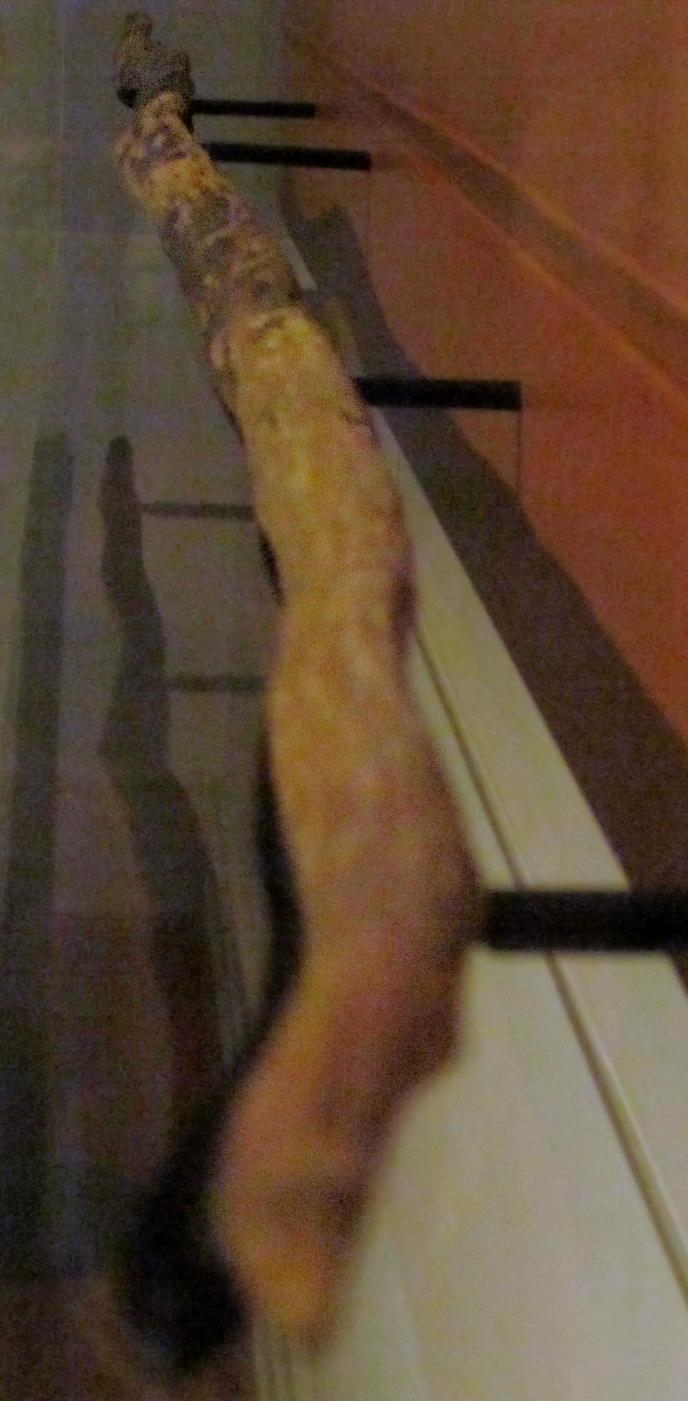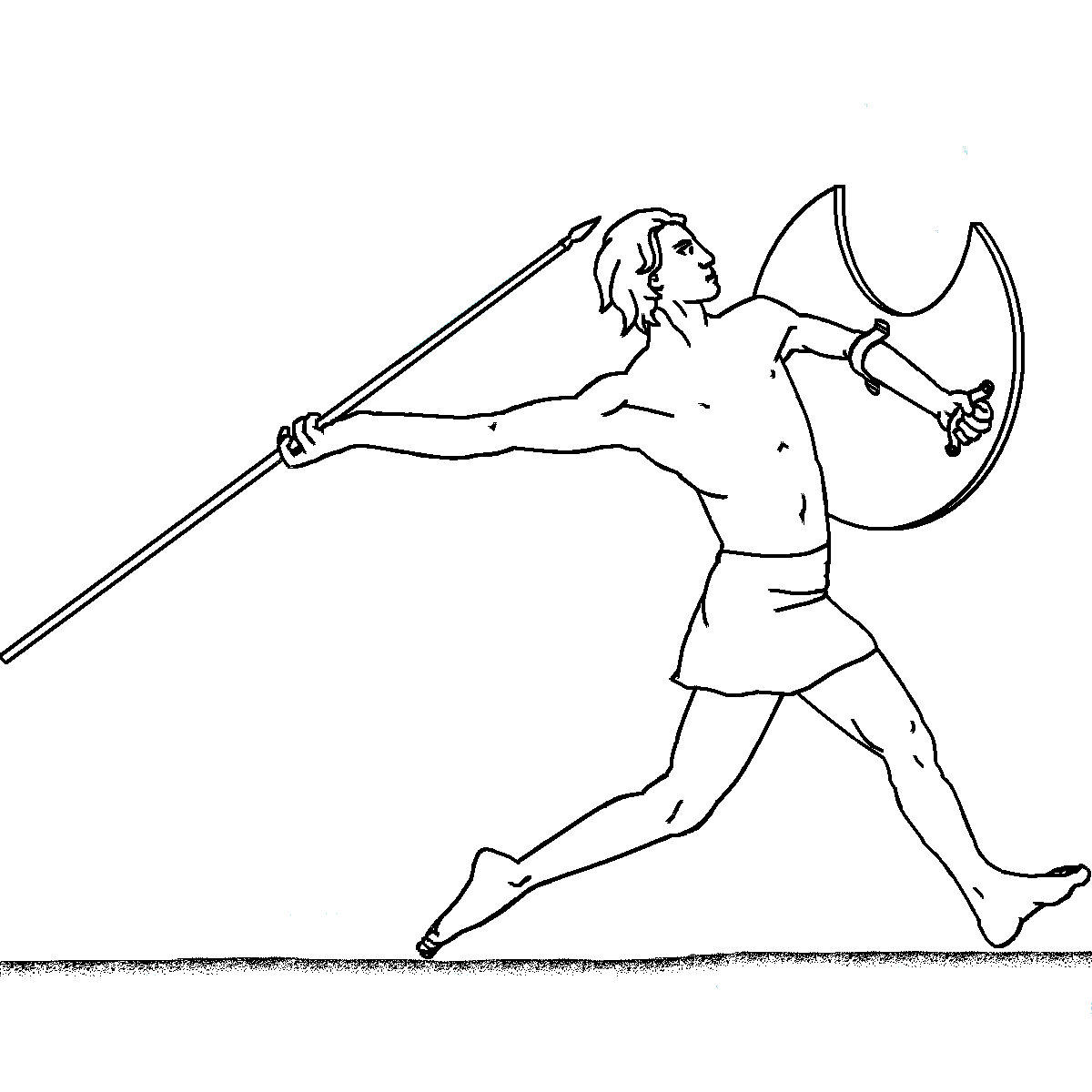|
Schöningen
Schöningen is a town of about 11,000 inhabitants in the district of Helmstedt, in Lower Saxony, Germany. Geography The town is located on the southeastern rim of the Elm hill range, near the border with the state of Saxony-Anhalt. In its current form, it was created in 1974 by joining the municipalities of Esbeck, Hoiersdorf, and Schöningen. Schöningen station was served by regional trains on the Wolfenbüttel–Helmstedt railway line until it was closed in 2007. The town is a stop on the scenic German Timber-Frame Road. History In archaeology, Schöningen is famous for the Schöningen Spears, four ancient wooden spears found in an opencast mine near the town (Bamford & Henderson 2003). The spears are about 400,000 years old (Klein. 2005. p114), making them the world's oldest human-made wooden artifacts, as well as the oldest weapons, ever found. Three of them were probably manufactured as projectile weapons, because the weight and tapered point is at the front of the spea ... [...More Info...] [...Related Items...] OR: [Wikipedia] [Google] [Baidu] |
Schöningen Spears
The Schöningen spears are a set of ten wooden weapons from the Palaeolithic Age that were excavated between 1994 and 1999 from the 'Spear Horizon' in the open-cast lignite mine in Schöningen, Helmstedt district, Germany. They were found together with animal bones and stone and bone tools. The excavations took place under the management of Hartmut Thieme of the Lower Saxony State Service for Cultural Heritage (NLD). The age of the spears, originally assessed as being between 380,000 and 400,000 years old, was estimated from their stratigraphic position, 'sandwiched between deposits of the Elsterian and Saalian glaciations, and situated within a well-studied sedimentary sequence.' However, more recently, thermoluminescence dating of heated flints in a deposit beneath that which contained the spears date the spears to between 337,000 and 300,000 years old, placing them at the end of the interglacial Marine Isotope Stage 9. The Schöningen spears thus postdate the earlie ... [...More Info...] [...Related Items...] OR: [Wikipedia] [Google] [Baidu] |
Schöningen
Schöningen is a town of about 11,000 inhabitants in the district of Helmstedt, in Lower Saxony, Germany. Geography The town is located on the southeastern rim of the Elm hill range, near the border with the state of Saxony-Anhalt. In its current form, it was created in 1974 by joining the municipalities of Esbeck, Hoiersdorf, and Schöningen. Schöningen station was served by regional trains on the Wolfenbüttel–Helmstedt railway line until it was closed in 2007. The town is a stop on the scenic German Timber-Frame Road. History In archaeology, Schöningen is famous for the Schöningen Spears, four ancient wooden spears found in an opencast mine near the town (Bamford & Henderson 2003). The spears are about 400,000 years old (Klein. 2005. p114), making them the world's oldest human-made wooden artifacts, as well as the oldest weapons, ever found. Three of them were probably manufactured as projectile weapons, because the weight and tapered point is at the front of the spea ... [...More Info...] [...Related Items...] OR: [Wikipedia] [Google] [Baidu] |
Helmstedt (district)
Helmstedt is a district in Lower Saxony, Germany. It is bounded by (from the west and clockwise) the district of Wolfenbüttel, the City of Braunschweig, the District of Gifhorn, the City of Wolfsburg and the State of Saxony-Anhalt (districts of Börde and Harz). Geography The district is bounded by the Elm (a hill chain) in the west and the Lappwald (a riparian forest) in the east. Large parts of the district are part of the ''Elm-Lappwald Nature Park''. History In the Elm limestone was mined in medieval times; limestone from the region was used for the tomb of Henry the Lion as well as for the imperial cathedral of Königslutter. In the Middle Ages Königslutter was among the most wealthy cities of the Holy Roman Empire. In 1576 the University of Helmstedt was founded, which was the largest university of protestant Germany. The Duchy of Brunswick (deriving from Brunswick-Lüneburg) created administrative districts (''Kreise'') in 1833; the District of Helmstedt was one of t ... [...More Info...] [...Related Items...] OR: [Wikipedia] [Google] [Baidu] |
Willigis
Willigis ( la, Willigisus; german: Willigis, Willegis; 940 – 23 February 1011 AD) was Archbishop of Mainz from 975 until his death as well as archchancellor of the Holy Roman Empire. Life Willigus was born in the Duchy of Saxony, possibly at Schöningen, the son of a free peasant. The able and intelligent young man received a good education, and was recommended by Bishop Volkold of Meissen to the service of Emperor Otto the Great. About 971, Willigis was appointed chancellor, an office formerly held by the emperor's brother Archbishop Bruno of Cologne. Until 973 he served Otto throughout the last years of his reign and at the height of his power. In 975 Emperor Otto II made him Archbishop of Mainz and Archchancellor for Germany. Of humble origin, Willigis had to cope with many objections; he immediately had Pope Benedict VII confirm his supremacy as metropolitan bishop. Soon he started to build the great Cathedral of Mainz. Willigis demanded solid learning in his clergy too ... [...More Info...] [...Related Items...] OR: [Wikipedia] [Google] [Baidu] |
Javelin
A javelin is a light spear designed primarily to be thrown, historically as a ranged weapon, but today predominantly for sport. The javelin is almost always thrown by hand, unlike the sling, bow, and crossbow, which launch projectiles with the aid of a hand-held mechanism. However, devices do exist to assist the javelin thrower in achieving greater distance, such as spear-throwers or the amentum. A warrior or soldier armed primarily with one or more javelins is a javelineer. The word javelin comes from Middle English and it derives from Old French ''javelin'', a diminutive of ''javelot'', which meant spear. The word ''javelot'' probably originated from one of the Celtic languages. Prehistory There is archaeological evidence that javelins and throwing sticks were already in use by the last phase of the Lower Paleolithic. Seven spear-like objects were found in a coal mine in the city of Schöningen, Germany. Stratigraphic dating indicates that the weapons are about 400,000 ... [...More Info...] [...Related Items...] OR: [Wikipedia] [Google] [Baidu] |
Elm (hills)
The Elm () is a range of hills north of the Harz mountains in the Helmstedt and Wolfenbüttel districts of Lower Saxony, Germany. It has a length of about 25 km (15.5 mi) and a width of 3–8 km (2–5 mi) and rises to an elevation of 323 meters. Surrounded by the Northern European Lowlands, the Elm is almost uninhabited and the largest beech forest in Northern Germany. The hills are of a triassic limestone called ''Elmkalkstein''. Together with the neighbouring Lappwald range, the Elm has been a protected nature park since 1977. The Elm is a popular among hikers, cyclists, and motor cyclists. Rivers originating in the Elm include: * Altenau * Lutter * Missaue * Scheppau * Schunter * Wabe Towns on the edge of the Elm include: * Königslutter Königslutter am Elm is a town in the district of Helmstedt in Lower Saxony, Germany. Geography It is located on the northeastern slopes of the Elm hill range, within the Elm-Lappwald Nature Park, about e ... [...More Info...] [...Related Items...] OR: [Wikipedia] [Google] [Baidu] |
Kaiserpfalz
The term ''Kaiserpfalz'' (, "imperial palace") or ''Königspfalz'' (, "royal palace", from Middle High German ''phal ne'' to Old High German ''phalanza'' from Middle Latin ''palatia'' luralto Latin ''palatium'' "palace") refers to a number of castles and palaces across the Holy Roman Empire that served as temporary, secondary seats of power for the Holy Roman Emperor in the Early and High Middle Ages. The term was also used more rarely for a bishop who, as a territorial lord (''Landesherr''), had to provide the king and his entourage with board and lodging, a duty referred to as ''Gastungspflicht''. Origin of the name ''Kaiserpfalz'' is a German word that is a combination of ''Kaiser'', meaning "emperor", which is derived from "caesar"; and ''Pfalz'', meaning "palace", and itself derived from the Latin ''palatium'', meaning the same (see palace). Likewise ''Königspfalz'' is a combination of ''König'', "king", and ''Pfalz'', meaning "royal palace". Description and purpo ... [...More Info...] [...Related Items...] OR: [Wikipedia] [Google] [Baidu] |
Straight-tusked Elephant
The straight-tusked elephant (''Palaeoloxodon antiquus'') is an extinct species of elephant that inhabited Europe and Western Asia during the Middle and Late Pleistocene (781,000–30,000 years before present). Recovered individuals have reached up to in height, and an estimated in weight. The straight-tusked elephant probably lived in small herds, flourishing in interglacial periods, when its range would extend as far north as Great Britain. Isolated tusks are often found while partial or whole skeletons are rare, and there is evidence of predation by early humans. It is the ancestral species of most dwarf elephants that inhabited islands in the Mediterranean. Description ''Palaeoloxodon antiquus'' was quite large, with individuals reaching in height. Like other members of ''Palaeoloxodon'', ''P. antiquus'' possesses a well developed parieto-occipital crest at the top of the cranium that anchored the splenius as well as possibly the rhomboid muscles to support the lar ... [...More Info...] [...Related Items...] OR: [Wikipedia] [Google] [Baidu] |
Charlemagne
Charlemagne ( , ) or Charles the Great ( la, Carolus Magnus; german: Karl der Große; 2 April 747 – 28 January 814), a member of the Carolingian dynasty, was King of the Franks from 768, King of the Lombards from 774, and the first Emperor of the Romans from 800. Charlemagne succeeded in uniting the majority of western and central Europe and was the first recognized emperor to rule from western Europe after the fall of the Western Roman Empire around three centuries earlier. The expanded Frankish state that Charlemagne founded was the Carolingian Empire. He was canonized by Antipope Paschal III—an act later treated as invalid—and he is now regarded by some as beatified (which is a step on the path to sainthood) in the Catholic Church. Charlemagne was the eldest son of Pepin the Short and Bertrada of Laon. He was born before their canonical marriage. He became king of the Franks in 768 following his father's death, and was initially co-ruler with his brother ... [...More Info...] [...Related Items...] OR: [Wikipedia] [Google] [Baidu] |
Ottonian Dynasty
The Ottonian dynasty (german: Ottonen) was a Saxon dynasty of German monarchs (919–1024), named after three of its kings and Holy Roman Emperors named Otto, especially its first Emperor Otto I. It is also known as the Saxon dynasty after the family's origin in the German stem duchy of Saxony. The family itself is also sometimes known as the Liudolfings (), after its earliest known member Count Liudolf (d. 866) and one of its most common given names. The Ottonian rulers were successors of the Germanic king Conrad I, who was the only Germanic king to rule in East Francia after the Carolingian dynasty and before this dynasty. The Ottonians are associated with the notable military success that transformed the political situation in contemporary Western Europe: "It was the success of the Ottonians in molding the raw materials bequeathed to them into a formidable military machine that made possible the establishment of Germany as the preeminent kingdom in Europe from the ten ... [...More Info...] [...Related Items...] OR: [Wikipedia] [Google] [Baidu] |
Landesamt Für Statistik Niedersachsen ...
The statistical offices of the German states ( German: ''Statistische Landesämter'') carry out the task of collecting official statistics in Germany together and in cooperation with the Federal Statistical Office. The implementation of statistics according to Article 83 of the constitution is executed at state level. The federal government has, under Article 73 (1) 11. of the constitution, the exclusive legislation for the "statistics for federal purposes." There are 14 statistical offices for the 16 states: See also * Federal Statistical Office of Germany References {{Reflist Germany Statistical offices Germany Germany, officially the Federal Republic of Germany (FRG),, is a country in Central Europe. It is the most populous member state of the European Union. Germany lies between the Baltic and North Sea to the north and the Alps to the sou ... [...More Info...] [...Related Items...] OR: [Wikipedia] [Google] [Baidu] |
Pepin The Short
the Short (french: Pépin le Bref; – 24 September 768), also called the Younger (german: Pippin der Jüngere), was King of the Franks from 751 until his death in 768. He was the first Carolingian to become king. The younger was the son of the Frankish prince Charles Martel and his wife Rotrude, Pepin's upbringing was distinguished by the ecclesiastical education he had received from the monks of St. Denis. Succeeding his father as the Mayor of the Palace in 741, Pepin reigned over Francia jointly with his elder brother Carloman. Pepin ruled in Neustria, Burgundy, and Provence, while his older brother Carloman established himself in Austrasia, Alemannia, and Thuringia. The brothers were active in suppressing revolts led by the Bavarians, Aquitanians, Saxons, and the Alemanni in the early years of their reign. In 743, they ended the Frankish interregnum by choosing Childeric III, who was to be the last Merovingian monarch, as figurehead king of the Franks. Being wel ... [...More Info...] [...Related Items...] OR: [Wikipedia] [Google] [Baidu] |






